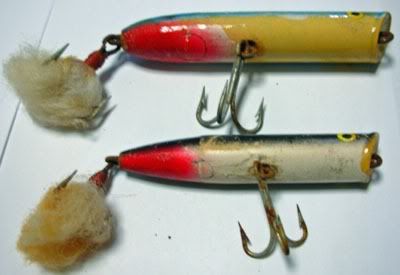
My first few early attempts at making fishing tackle didn't quite turn out. In fact the results were down right hilarious. Back then there wasn't hardly any information about how to make fishing lures at all, so everything had to be learned through experience broom sticks and painting them with your car modeling testor paints. I still remember running down to the water with my first fishing lure that I had made. It didn't wobble, I think the paint job only lasted a few minutes before starting to peel and hang off my lure like wet noodles. But it sure was a lot of fun.
Today learning how to make fishing tackle doesn't have to be like back when I was boy. Even though there isn't a ton of information available the art of making fishing lures has come a long way to helping the beginner.
The first step is having a basic knowledge of fishing tackle, design and function and knowing of what lure making supplies you really need. After that the fun can begin as you try your hand at making fishing lures. Here are a couple quick tips to help you out in making wooden fishing lures.
* 1. Most wooden lures in your tackle box are made of a few different types of wood. Balsa and Basswood are the most common woods used to make fishing lures. However you can make some really great fishing lures out of more common wood found in you local home improvement store. Cedar makes some great fishing lures and you can use both red and white cedar. I have had great success using both. They carve and shape fairly easily and due to the woods water resiliency finish up nicely.
* 2. Easy Ready to Go Painting Patterns. Did you know you can use your wife's or mothers used nylons to get some great patterns on your fishing lures without a lot of fuss. By using an airbrush you can take advantage of some of the patterns on used nylons to make some great subtle patterns on the sides of wooden fishing lures just make sure to use an old pair or you just may find yourself in the dog house if you use your wife's best Sunday nylons.
* 3. Always seal your wooden plugs before painting. This was something I didn't even know to do when I was a boy during my early fishing lure making attempts. It may sound like a small tip, but it goes a long way to making some nice fishing lures. Just use some wood sealer from your local home improvement store but here the crucial tip. After doing so sand down the fishing lure once more using very fine sandpaper, or even a brown paper bag. Wood sealers have a tendency to raise to raise the grain in wood, and this would result in an un-even paint job. It doesn't take a lot of time to do, but it helps to create a better looking fishing lure.
There's a lot more that can be shared about how to make fishing lures, and for most the best way to start learning is to jump in and start having some fun. I would suggest however to get the most from your first few tackle making attempts is to learn a little more about this fun hobby.
For more information about how to make fishing lures visit tacklemaking tips. There you will find a lot of great information and useful information on how to get started in this fun hobby.
Article Source: http://EzineArticles.com/?expert=Tony_Bolton
see my previous post :
Trout Fishing Lures - Tips On Which Ones To Use To Guarantee Success